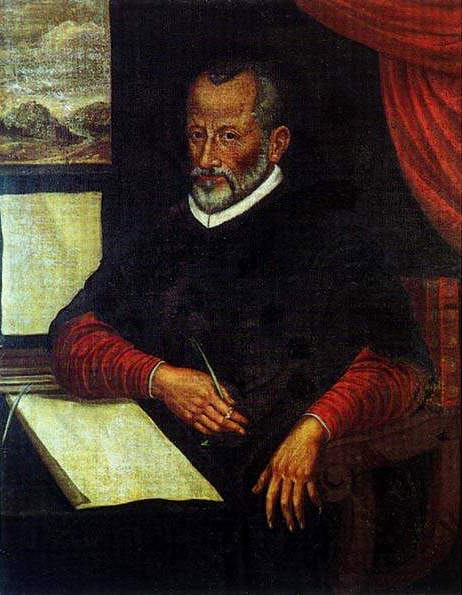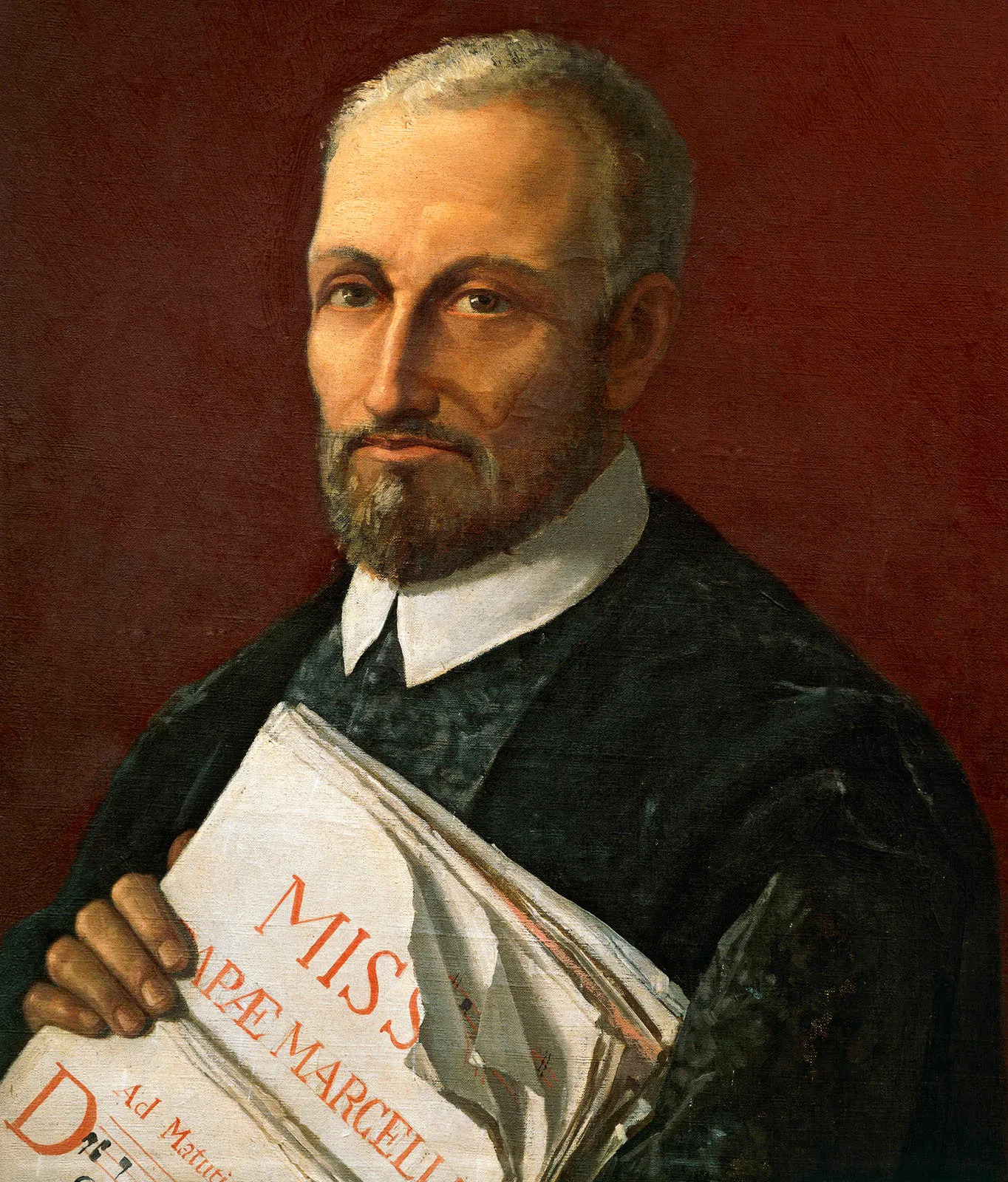

Giovanni Pierluigi da Palestrina
Born: 1525Died: 1594
Education: In 1540, he moved to Rome, where he studied in the school of the Huguenot Claude Goudimel. He also studied with Robin Mallapert and Firmin Lebel.
Career: In 1551, Palestrina was appointed to the maestro di cappella or musical director of the Cappella Giulia, Julian Chapel, in the sense of choir, the choir of the chapter of canons at St. Peter's Basilica.
Palestrina was born in a small town where his ancestors are thought to have lived for generations, but as a child he was taken to nearby Rome. In 1537 he was one of the choirboys at the basilica of Santa Maria Maggiore, where he also studied music between 1537 and 1539. In 1544 Palestrina was engaged as organist and singer in the cathedral of his native town. His duties included playing the organ, helping with the choir, and teaching music. His pay was that of a canon and would have been received in money and kind. His prowess at the church there attracted the attention of the bishop, Giovanni Maria Ciocchi del Monte, who later became Pope Julius III. In 1547 Palestrina married Lucrezia Gori. Three sons were born to them: Rodolfo, Angelo, and Iginio. Only the last outlived his father. In 1551 Palestrina returned to Rome, where he assumed the first of his papal appointments, as musical director of the Julian Chapel choir, and thus was responsible for the music in St. Peter’s. Before he was 30 he published his first book of masses (1554), dedicated to Julius III, and the following year he was promoted to singer in the Pontifical Choir. About this time he became composer to the papal chapel. Palestrina repaid the pope’s patronage by composing a mass in his honour. Yet he did not neglect the secular side of his art, for his first book of madrigals (secular and spiritual part-songs) appeared in 1555, unfortunately at a time when the lenient regime of Julius III had given way to the sterner discipline of Paul IV. A decree of the new pope forbade married men to serve in the papal choir, and Palestrina, together with two of his colleagues, received a small pension by way of compensation for their dismissal. For the next five years Palestrina directed the choir of St. John Lateran, but his efforts were continually thwarted by singers whose quality was almost as limited as their number, which was restricted because very little money was available for music. Nevertheless, he gained admission for his eldest son, Rodolfo, then about 13, as a chorister. Eventually he broke away from this uncongenial milieu. The chapter archives of St. John Lateran record that in July 1560 he and his son suddenly departed. A year passed before Palestrina found employment. In March 1561 he accepted a new post at Santa Maria Maggiore. This post was more congenial to him and he remained at it for about seven years. At the invitation of Cardinal Ippolito d’Este he then took charge of the music at the Villa d’Este in Tivoli, a popular summer resort near Rome. He was in the cardinal’s service for four years, at which time he also worked as music master for a newly formed Seminarium Romanum (Roman Seminary), where his sons Rodolfo and Angelo became students. Palestrina received an offer in 1568 to become musical director at the court of the emperor Maximilian II in Vienna. He refused the position because of the low salary and a disinclination to leave Rome. Palestrina’s terms were also too high when he was invited to the court at Mantua in 1583. The composer and the duke of Mantua, Guglielmo Gonzaga, an amateur musician of some pretensions, did become friends, however, and Palestrina was commissioned to write special compositions for the ducal chapel of Santa Barbara.

